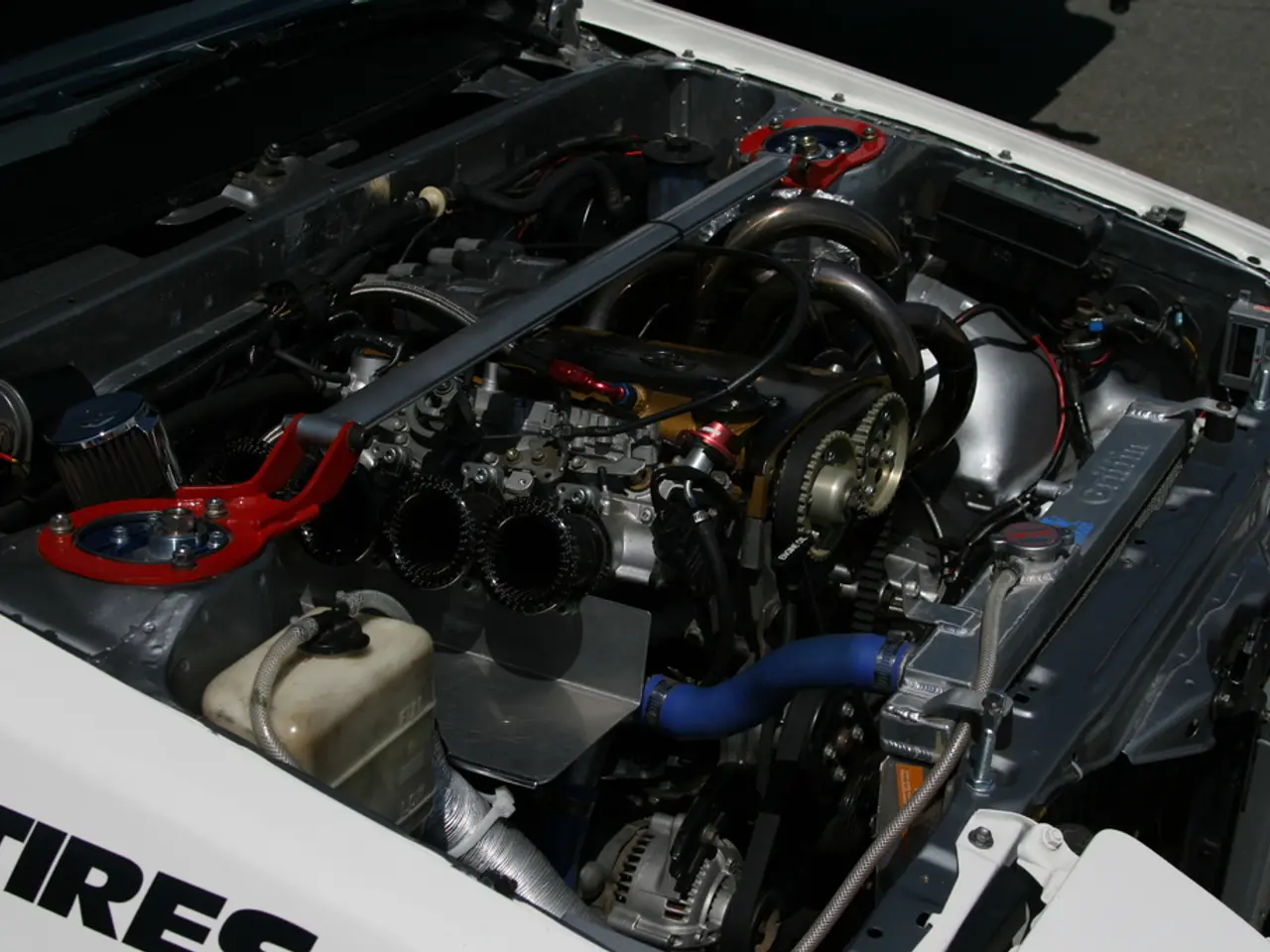Uncovering the mystery behind BYD's newest hybrid system's fuel-efficient performance.
In a significant stride towards sustainable mobility, Chinese automaker BYD has launched its fifth-generation Dual Motor (DM) system in the Qin L and Seal 06 models. This new technology is set to redefine the standards of efficiency and range in the electric vehicle (EV) market.
The fifth-generation DM system employs simulation technology to minimise energy loss from the power transmission shaft to the tires, thereby enhancing overall efficiency. This technology expansion results in a remarkable range of 2,100 kilometers for the Qin L and Seal 06, a threefold increase compared to fuel-powered vehicles.
A key component of this system is the main chip in the powertrain controller, which has seen a substantial cost reduction. From over RMB 400 (USD 55) during the chip shortage in 2021, the cost has been slashed to RMB 50 (USD 7) currently.
BYD's efforts with the fifth-generation DM system also focus on optimising each component's efficiency. The vehicle body has been adjusted with active air intake grilles, low drag calipers, and ultra-low rolling resistance tires, all aimed at reducing wind resistance and improving efficiency.
The high-efficiency engine for plug-in hybrids, a part of this system, boasts a thermal efficiency of 46.06%. The electric hybrid system (EHS) within the fifth-generation DM technology boasts an overall efficiency of 92%.
The new generation of BYD's blade batteries, designed specifically for plug-in hybrid vehicles, have shown impressive improvements. The cooling system, for instance, has seen a 45% improvement in temperature uniformity, thanks to an S-shaped cooling plate design. These batteries also have a feedback rate of up to 5C and a discharge rate of 16C.
The greatest improvement in this generation of plug-in hybrid blade batteries is their cooling system, which has an S-shaped cooling plate design improving temperature uniformity by 45%. This advancement, coupled with the continuous decline in the prices of upstream raw materials for power batteries in the past two years, gives BYD's self-made batteries a cost advantage.
The fifth-generation DM technology's higher integration saves space, allowing for a larger fuel tank. The Qin L's fuel tank has been upgraded from 48 liters in the Qin Plus to 65 liters. The Qin L DM-i and Seal 06 DM-i are priced between RMB 99,800-139,800 (USD 13,770-19,290).
BYD replaced the lead-acid battery in the Qin L and Seal 06 with a 12-volt lithium iron phosphate (LFP) battery. This change, coupled with the system's improvements, allows the fifth-generation DM system to achieve a fuel consumption of 2.9 liters per 100 kilometers on a depleted battery and a combined range of 2,100 kilometers.
The most significant difference in the latest version of BYD's DM system is its seven-in-one powertrain controller, which has a higher degree of integration. This controller, along with the other advancements, showcases BYD's commitment to pushing the boundaries of electric vehicle technology.
The launch of the fifth-generation DM system and the Qin L and Seal 06 has demonstrated BYD's potential to the market, with the stock price rising over 8% the day after the launch event. Despite the unnamed engineer who announced three months after the release of BYD's fourth generation DM technology that the goal is to reduce fuel consumption to less than three liters per 100 kilometers, BYD continues to make strides in the EV industry.
Read also:
- Understanding Hemorrhagic Gastroenteritis: Key Facts
- Trump's Policies: Tariffs, AI, Surveillance, and Possible Martial Law
- Expanded Community Health Involvement by CK Birla Hospitals, Jaipur, Maintained Through Consistent Outreach Programs Across Rajasthan
- Abdominal Fat Accumulation: Causes and Strategies for Reduction








